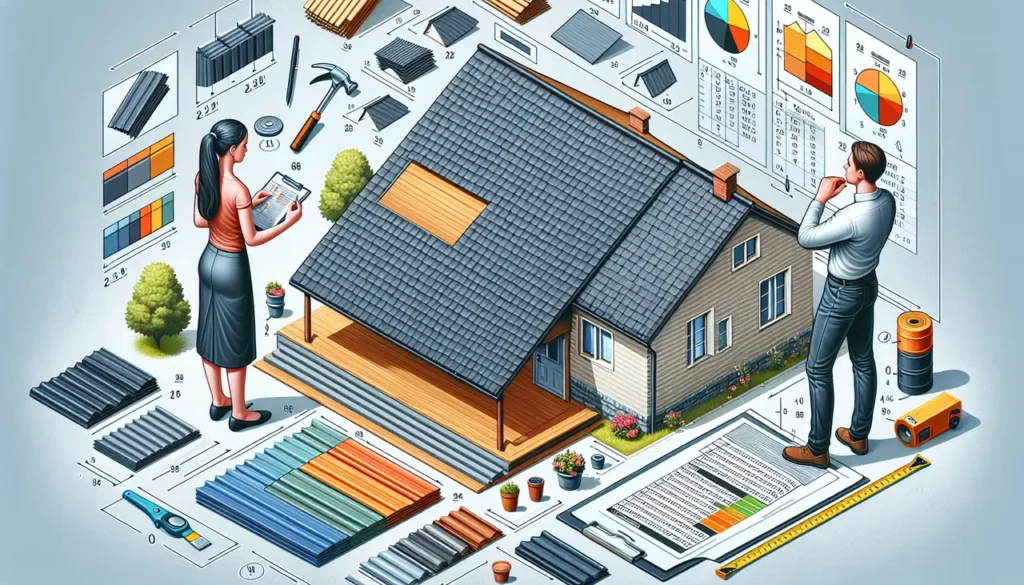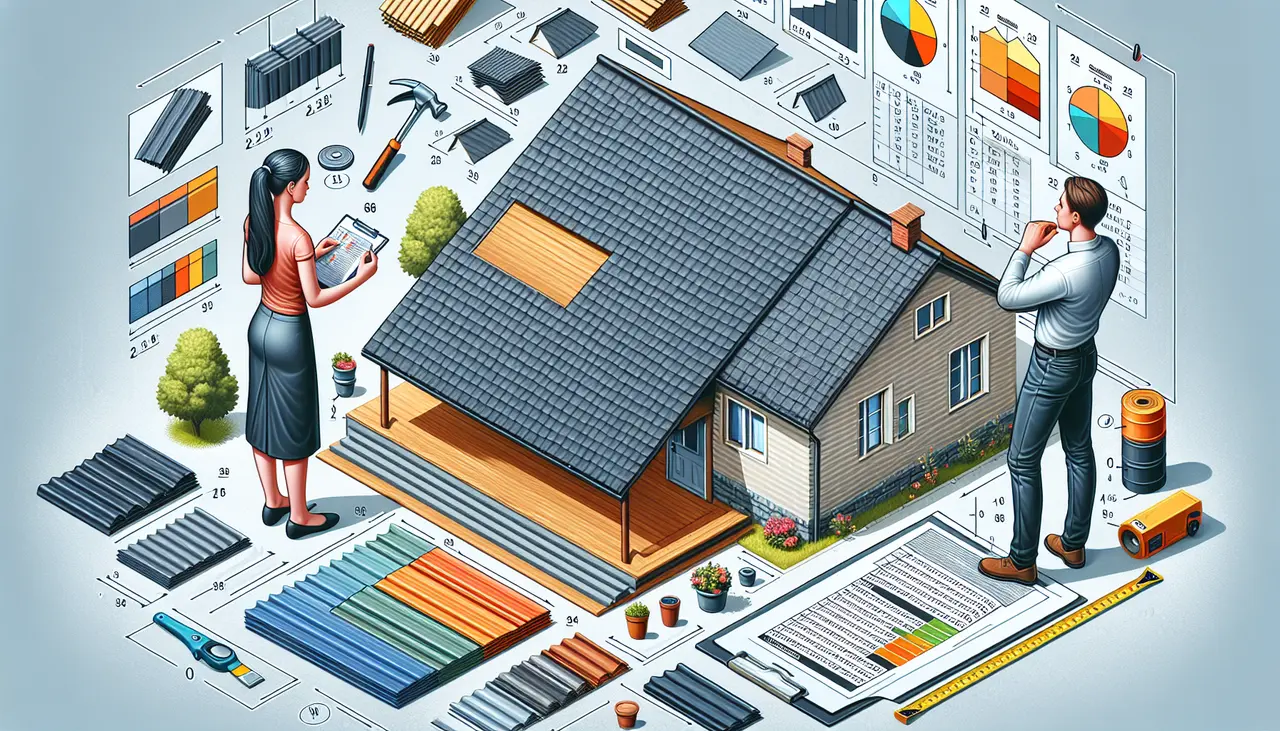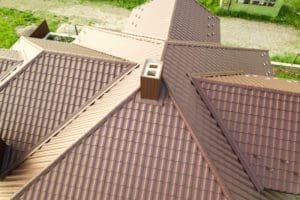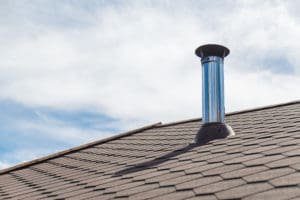Introduction to Roofing Estimates
Getting a roofing estimate is like checking the price tag before you buy a roof. It’s a must. A good roofing estimate gives you a clear picture of what you’re about to dive into financially. Think of it as your roofing project’s roadmap. It tells you where your money is going, from the nails up to the last shingle. A solid estimate covers everything – materials, labor, and even the cleanup after the job’s done. It’s not just about slapping a price on a piece of paper. It’s about breaking down the costs so you know exactly what you’re paying for. And remember, a detailed estimate can also help you compare prices between different contractors to ensure you’re getting the best deal. So, don’t skip this step; it’s your wallet’s first line of defense.
Key Components of a Roofing Estimate
When you’re looking to get your roof worked on, you’ll get an estimate from a roofer. This isn’t just a piece of paper with a price on it. A solid roofing estimate should break down several important bits of information, making it clear what you’re paying for. Here’s what you should look for: Materials: This part lists everything from shingles to underlayment and flashing. It should tell you the type and quality of materials to be used. Labor: This is the cost of the actual work. How many people will be on your roof, and for how long? Scope of work: This outlines exactly what the job entails, including removal of the old roof, repairs, and installation of the new one. Timeline: When will they start and when they expect to finish? Warranties: Look for details on the manufacturer’s warranty for materials and the roofer’s warranty for workmanship. Payment terms: This section spells out how much, when, and how you’re supposed to pay. Insurance and licensing: It should confirm that the contractor is covered and licensed to work on your roof. Don’t just skim this document. Understanding these components helps you compare estimates and choose the right roofer for your job.
Materials: Types and Costs
When you get a roofing estimate, materials are a big part of the conversation. You’ll probably hear about shingles, underlayment, flashing, and gutters. Each has its own price tag. Shingles can range from cheap asphalt ones to pricier metal or slate. Underlayment and flashing—the stuff that keeps water out—also vary in material and cost. Don’t forget about gutters and downspouts; they’re crucial for steering water away from your house. Prices soar or drop based on the quality and durability of these materials. A savvy move? Ask your roofer about all material options and their costs. This way, you can balance your budget with your roof’s longevity and look. Remember, going cheap now might mean more repairs later, so think about what makes sense for you.
Labor: Understanding the Workforce Charges
When you get a roofing estimate, one of the key parts you’ll see is the labor cost. This is what you pay for the physical work of installing your new roof. It’s not just about someone nailing shingles on your roof; it involves a team of skilled workers doing everything from removing your old roof, making necessary repairs, installing new materials, and cleaning up afterward. The labor charge reflects the time, effort, and expertise required to get the job done right.
Remember, skilled labor isn’t cheap, but it’s worth it. A low labor cost might mean the workers are inexperienced or rushed, leading to problems down the line. On the other hand, a very high labor cost doesn’t automatically guarantee the best quality. It’s about finding the balance.
Typically, labor costs can vary widely depending on where you live and the complexity of your roofing project. For a standard job, labor might make up a significant part of the total estimate, but remember, paying for skilled labor is investing in the durability and longevity of your roof. So, when you look at the labor line in your estimate, understand that it’s an essential investment in your home’s future.
Duration: Timeline for Completion
When you get a roofing estimate, it should clearly state how long the job will take. This is crucial because it affects your daily life. A small repair might only take a day, but a full roof replacement could need up to a week or more, depending on the size of your house and the roofing material. Weather can also play a big part in how long the work will take. Good roofers will factor in some extra time in case of bad weather. Make sure this timeline is in the estimate so you can plan accordingly.
Warranties and Guarantees Included
When you get a roofing estimate, it’s crucial to check if it includes warranties and guarantees. These are your safety nets. Most reputable roofers will offer a manufacturer’s warranty that covers the roofing materials. This usually protects you from defects in the roofing materials themselves. On top of that, look for a workmanship warranty. This one’s on the roofer. It covers mistakes in installation or repair work. Typically, a workmanship warranty lasts for a year, but some might offer more. Longer is better, but always read the fine print. Guarantees matter because they promise that the roofer stands behind their work. If something goes wrong because of poor materials or sloppy work, you’re covered. Always ask for these details in writing. Don’t just take their word for it. This information gives you peace of mind and saves you from unexpected costs down the road.
Understanding Overhead Costs
Overhead costs are the expenses that keep a roofing business running behind the scenes. Think of it as the cost of doing business. These aren’t directly tied to one roofing project but are spread out across all the jobs a company does. Overhead costs can include the office space rent, salaries of the employees who work in the office, insurance for the business, and the tools and vehicles maintenance. Because these costs have to be covered, they get factored into your estimate. It’s like when you buy a cup of coffee; part of what you’re paying goes towards the rent of the cafe and the barista’s wage, not just the beans and water. Each roofing company will have different overhead costs, making some estimates higher than others even if they’re offering the same services. So, when you see your estimate, remember it’s not just about the materials and labor for your roof. It’s also about ensuring the company can keep its doors open to serve you and others in the community.
Additional Costs: Prep Work and Cleanup
When talking about roofing, always expect additional costs beyond just the materials and labor for the installation. Two critical areas where costs can add up are prep work and cleanup. For prep work, this could mean fixing parts of the roof structure that are damaged. It’s like making sure your walls are solid before painting them. If the structure isn’t solid, your new roof won’t last as it should. As for cleanup, it’s not just about picking up trash. It involves safely disposing of the old roofing material and making sure nails and debris are cleared from your yard, so it’s safe. These steps are essential but can add to the overall cost of your roofing project. Keep these in mind when reviewing your estimate.
How to Compare Different Roofing Estimates
When you get roofing estimates, you’re looking for the best deal, but that doesn’t just mean the lowest price. Each estimate should provide a detailed breakdown of costs. Compare these key elements to make the best decision. Materials include the type of shingles, underlayment, and ventilation systems. Labor involves removing the old roof, installation, and cleanup. Warranty offers protection for materials and workmanship. Permits and fees should also be listed, as they are necessary for legal compliance. Lastly, check for payment terms indicating when and how payments should be made. By comparing these elements, you can understand not only the cost but the value offered by each roofing contractor.
Conclusion: Making an Informed Decision
When it comes to getting your roof done, making an informed decision can save you time, money, and headaches. By now, you should know that a good roofing estimate isn’t just a number—it tells a complete story about what to expect in terms of materials, labor, warranty, and extras. Don’t just look at the bottom line; make sure you’re comparing apples to apples. Ask questions if something isn’t clear, and don’t be shy about getting multiple estimates to feel confident in your choice. Remember, the cheapest option isn’t always the best in the long run. A solid guarantee, quality materials, and a reputable roofer can mean less stress down the line. So, take your time, do your homework, and choose wisely. Your roof is a big investment, and getting it right matters.






